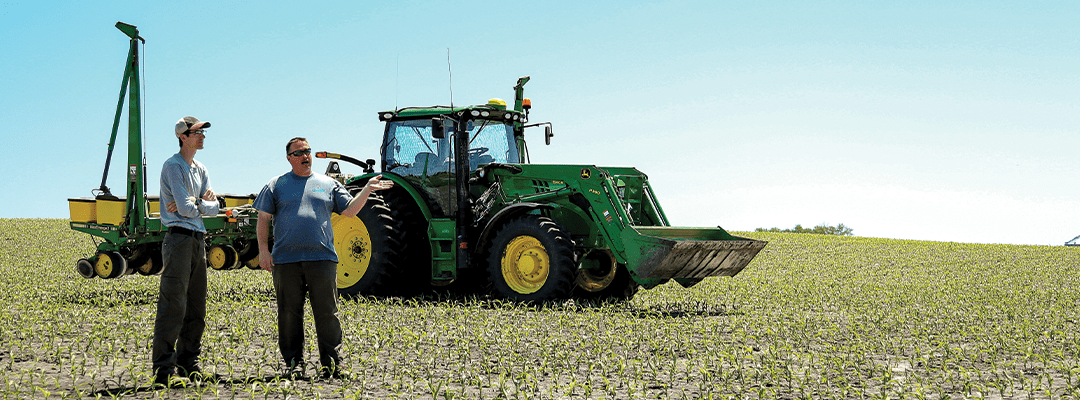From working to earn the business of a new customer to making sure your current customers are satisfied, those in the know realize that simply providing standard customer service isn’t enough to get the job done. Today, you need to create a customer experience that inspires trust and loyalty.
What’s the difference between customer service and customer experience? In short, it’s a proactive approach versus a reactive one. Obviously, there’s nothing wrong with answering your customers’ questions and responding to their requests. That’s good customer service, and people appreciate it!
But you can do better.
A quality customer experience means you anticipate what your customers need and predict the questions they’re likely to ask. Then, use that knowledge to address the issue before it even becomes a concern. Be honest. Which one would you rather be on the receiving end of?
Using Technology to Create a Winning Customer Experience
Alright, so we’ve established that focusing on providing a great customer experience is a winning strategy. Now, you just need the ability to predict the future so that you can anticipate your customers’ needs. That’s where using agriculture data systems, such as drone agriculture mapping software, comes into play.
The importance of agricultural productivity is more evident now than ever, and technology – along with the data you collect with it. This is the best way to boost productivity, increase efficiency, and optimize that customer experience, all at the same time.
Precision farming tools, like drones, allow you to collect data faster, more accurately, with 100 percent acre coverage. When you have such precise, comprehensive data, your analytics follow suit. And that gives you the opportunity to (proactively!) advise your growers using data-driven insights that your competition simply can’t match.
Data-Driven Insights at Every Stage
Even better is the fact that you’re not limited to only sharing these insights a couple of times a year. Because this drone technology is both time and cost-efficient you can easily gather and share insights throughout the growing cycle. Not only for the typical reasons or at the times when you’d traditionally connect with your growers. More key touchpoints with your growers means more opportunity to show them how much value you add to their business. This helps to establish you as a trusted advisor, not just a salesperson who comes around when they’re looking to make a deal.
The importance of agricultural productivity is more evident now than ever, and technology – along with the data you collect with it – is the best way to boost productivity, increase efficiency, and optimize that customer experience, all at the same time.
Precision farming tools, like drones, allow you to collect data faster, more accurately, and with 100 percent acre coverage. When you have such precise, comprehensive data, your analytics follow suit – and that gives you the opportunity to (proactively!) advise your growers using data-driven insights that your competition simply can’t match.
Data-Driven Insights at Every Stage
Even better is the fact that you’re not limited to only sharing these insights a couple of times a year. Because this drone technology is both time and cost-efficient you can easily gather and share insights throughout the growing cycle. Not only for the typical reasons or at the times when you’d traditionally connect with your growers. More key touchpoints with your growers means more opportunity to show them how much value you add to their business. This helps to establish you as a trusted advisor, not just a salesperson who comes around when they’re looking to make a deal.
For example, when it comes to corn, you’ll be getting a stand count to help your growers estimate their yield. But by utilizing aerial imagery to collect data on their fields, you can offer them timely advice. Including whether there’s an area where they should consider a replant, providing them with precise borders so they know exactly how much additional seed they’d need to buy to cover the area. And when it comes to tassel count, using drones to provide a more accurate, timely yield forecast is incredibly valuable.
While late season may not be the most obvious time to connect with growers, it’s actually an excellent opportunity to share data collected using multispectral satellite data to help them create a harvest plan, use remote sensing technology to determine why an area hasn’t performed as expected, or fly their fields to see whether any areas are in need of repair. Plus, you use analytics from throughout the season to launch a conversation about their plans for the coming year, once again offering your data-driven insights to help them achieve their goals.
Now, there’s one caveat to consider when it comes to these data-driven insights: More does not necessarily equal better, so be judicious in the data you collect and the analytics you share.
The best approach is to have a goal in mind before you begin data collection. What do you hope to learn, why do you need to know it, and what will you and your grower do with the information once you have it? A mindful approach will help you avoid getting buried beneath a mountain of unnecessary data, not to mention the fact that it’ll help you make the best use of your time – and your customers’ time, too.


